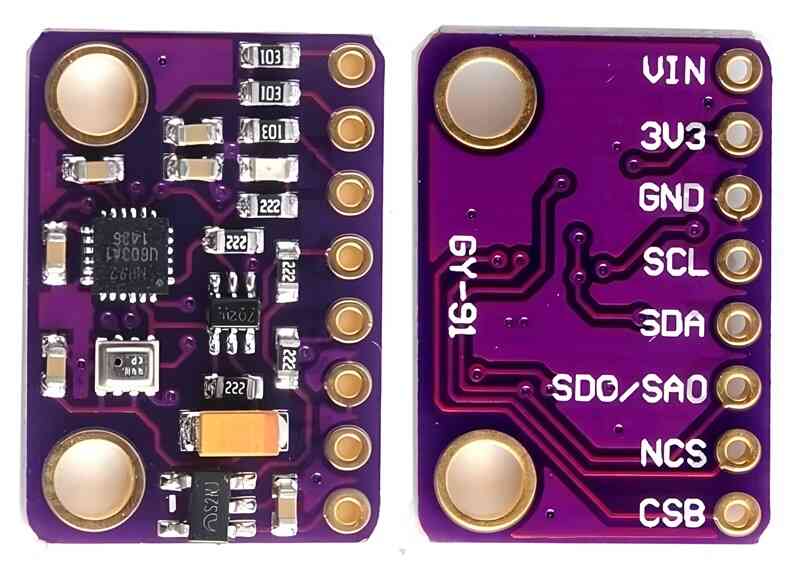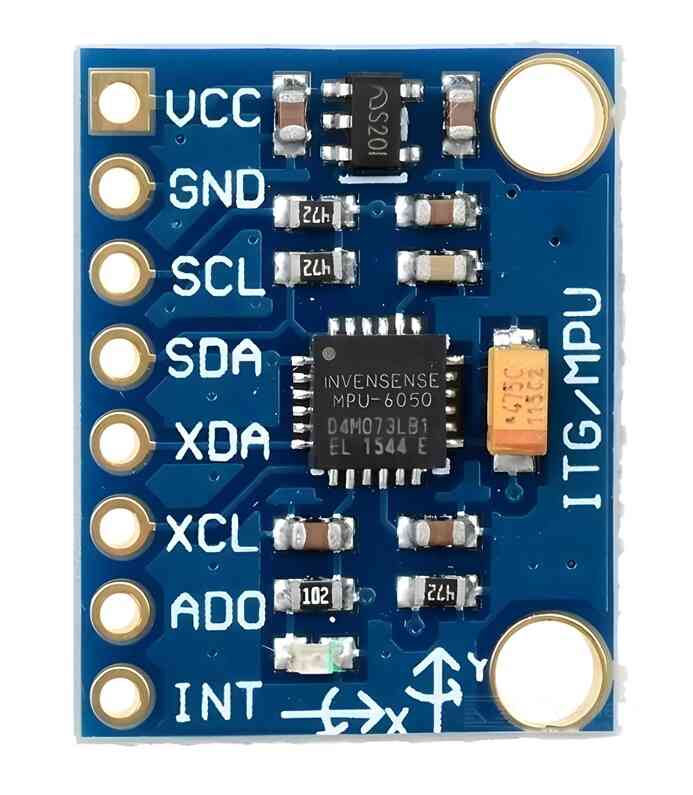Let’s explore Gyroscope sensor working with applications. A Gyroscope sensor is a device used to measure or maintain orientation and angular velocity. It’s a crucial component in various systems, from navigation in spacecraft to stabilization in drones and cameras. Here’s a detailed explanation of how a gyroscope sensor works:
A Gyroscope is a device used to measure or maintain orientation and angular velocity. It consists of a spinning mass, known as the rotor, mounted in a set of rings or gimbals. The gyroscope operates based on the principle of gyroscopic precession, where the spinning rotor’s angular momentum resists changes in orientation.
Gyroscope Principle of Operation:
The gyroscope operates based on the principle of gyroscopic precession, discovered by physicist Léon Foucault. It states that when a spinning object’s axis is tilted, the gyroscopic effect causes the object’s orientation to shift perpendicular to the applied force. In simpler terms, when you try to tilt a spinning gyroscope, it resists the change in its orientation. This resistance to changes in orientation allows the gyroscope to detect and measure angular velocity.
Types of Gyroscopes:
Mechanical Gyroscopes: These use a spinning rotor to detect changes in orientation. As the rotor spins, its angular momentum resists any changes in orientation.
Fiber Optic Gyroscopes (FOG): Uses the interference of light waves to detect mechanical rotation. Fiber optic gyroscopes are known for their high precision and reliability.
Ring Laser Gyroscopes (RLG): Operates on the principle of the Sagnac effect, where the difference in the time it takes light to travel around a closed loop in opposite directions is measured.
Fluid Gyroscopes: Utilize the movement of fluid to detect rotation. They can be mechanical, utilizing spinning fluids, or electronic, using properties of fluids to detect rotation.

Micro-Electro-Mechanical Systems (MEMS) Gyroscope: These gyroscopes are miniaturized and manufactured using microfabrication techniques. MEMS gyroscopes are commonly found in consumer electronics like smartphones and gaming controllers.
They work on Coriolis effect, where a vibrating structure experiences a force perpendicular to its motion when subjected to rotation. The resulting displacement can be measured to determine the angular rate.
There is a slight difference between Gyroscope and MEMS Gyroscope sensor. The MEMS gyroscope utilize a vibrating element to determine the angular velocity of a rotating body. As compared to mechanical gyroscopes, MEMS gyroscopes do not stabilize bodies in motion. They can only give data to microcontroller.
MEMS gyroscopes are manufactured using microfabrication techniques, similar to those used in the production of integrated circuits. This allows for the creation of tiny (100 microns), precise mechanical structures on a silicon wafer.
Types of Angular Rate Measurements:
-
- Yaw: Horizontal rotation on a flat surface when viewed from above.
- Pitch: Vertical rotation as seen from the front.
- Roll: Horizontal rotation when seen from the front.
MEMS Gyroscope Sensor Working:
MEMS (Micro-Electro-Mechanical Systems) Gyroscopes are a type of Gyroscope that operates on the principles of microfabrication and microelectronics. Here’s a simplified explanation of Gyroscope Sensor Working.
- Basic Structure: A MEMS Gyroscope consists of a tiny vibrating mass, often called the proof mass, suspended within a microfabricated structure. This proof mass is typically supported by flexible beams or springs.
- Coriolis Effect: When the MEMS gyroscope experiences angular rotation (rotation around an axis), the Coriolis effect comes into play. According to this effect, when a mass is moving in a certain direction within a rotating frame of reference, it appears to experience a force perpendicular to both its velocity and the rotation axis.
- Vibration: The proof mass in the MEMS gyroscope is usually set into oscillation by applying an AC voltage to electrodes or piezoelectric elements attached to it. This vibration can occur in one or more directions, depending on the design.
- Detecting Rotation: When the gyroscope undergoes angular rotation, the Coriolis effect causes the proof mass to experience a force perpendicular to its direction of vibration. This force induces a displacement in the proof mass, causing it to move in a direction perpendicular to both its vibration and the rotation axis.
- Sensing the Displacement: The displacement of the proof mass is detected using various sensing mechanisms. Common methods include capacitive sensing, piezoresistive sensing, or optical sensing. These sensors measure the displacement, which is directly proportional to the angular rotation rate.
- Output Signal: The displacement sensed by the detection mechanism is converted into an electrical signal, which is then processed and interpreted by the gyroscope’s electronics. This signal provides information about the angular velocity or rate of rotation to which the gyroscope is subjected.

Material in Vibration Gyroscope sensor:
Materials such as crystal and ceramics find application in the stationary components of the sensor (proof mass). In crystal-based structures, options like the double-T structure, Tuning Fork, and H-shaped tuning fork are common. Conversely, ceramic materials often lead to the selection of a prismatic or columnar structure.
The Vibration Gyroscope sensor exhibit various characteristics, notably the scale factor, temperature-frequency coefficient, compact size, shock resistance, stability, and noise attributes.
Raspberry Pi 5 Pinout, specifications and a Complete Guide

